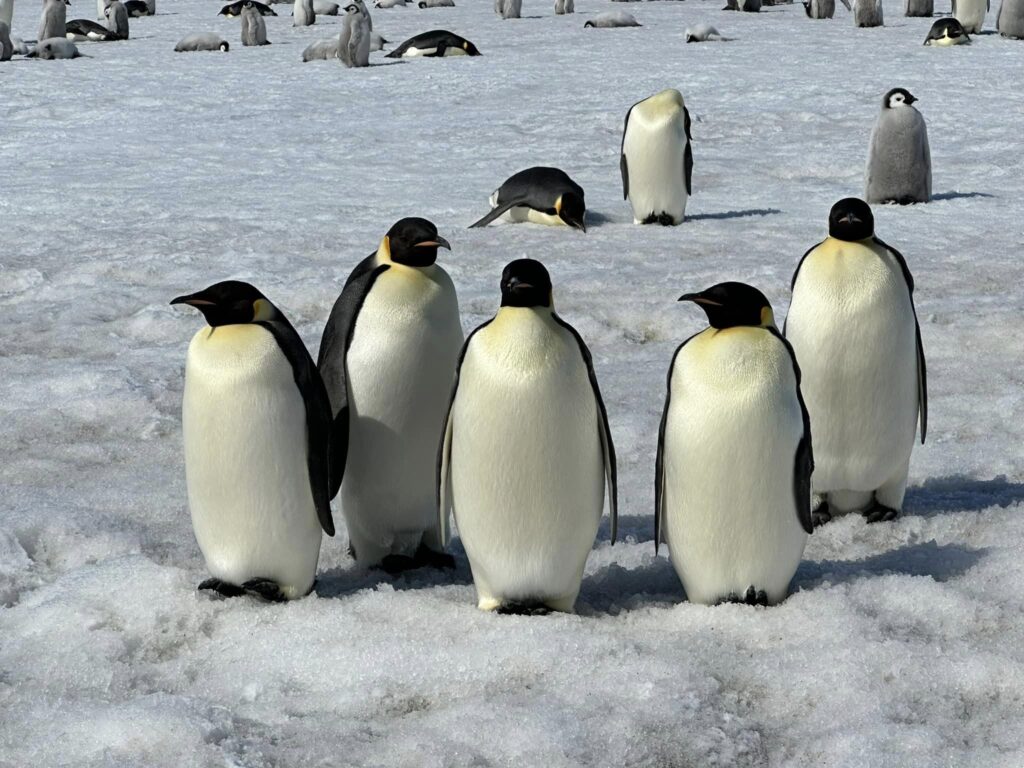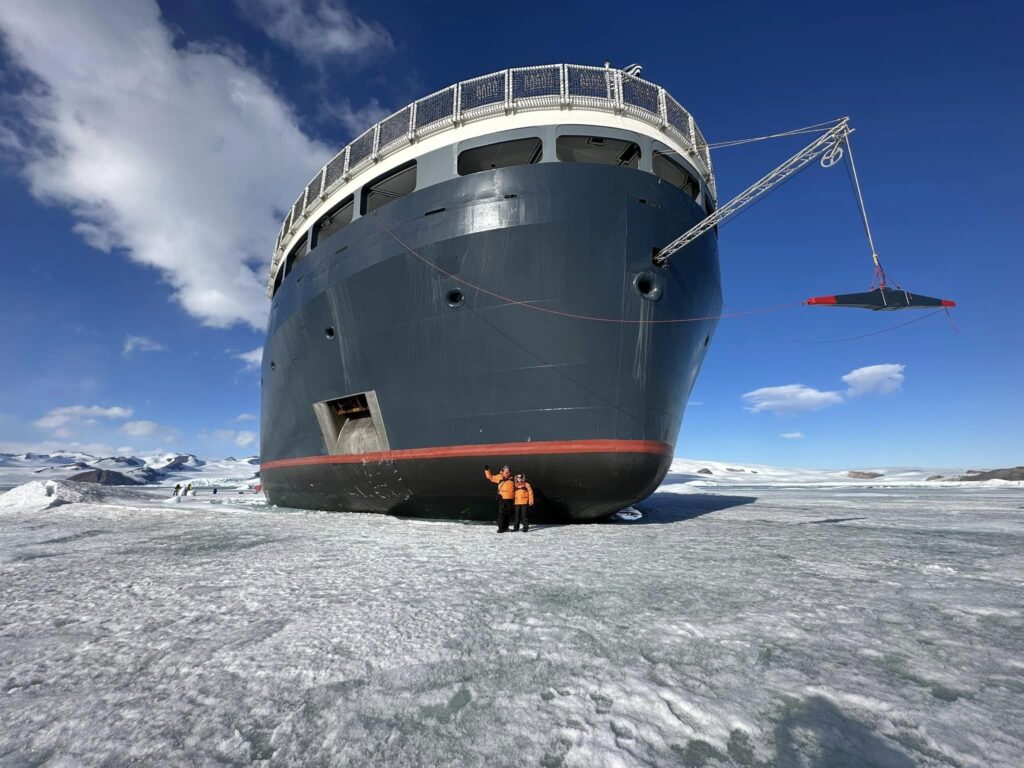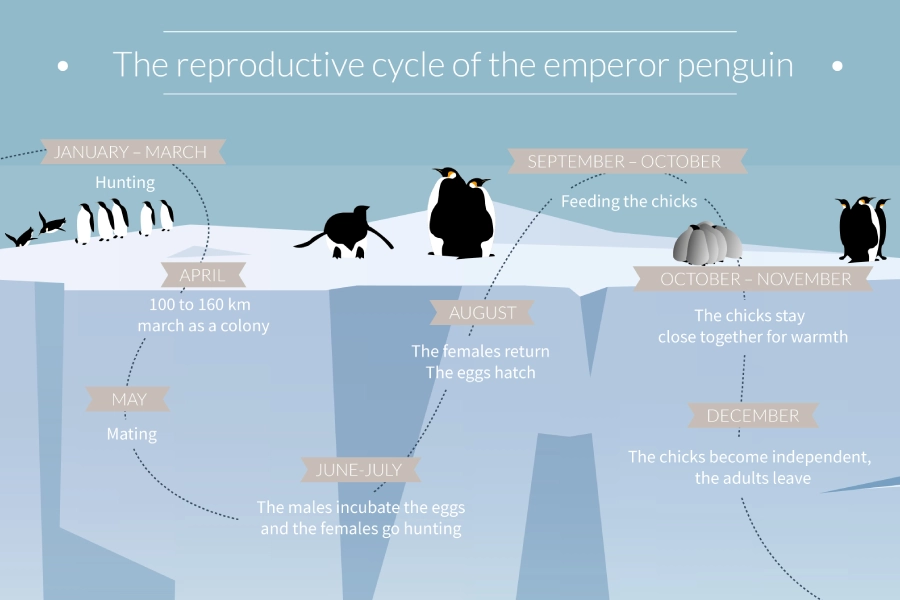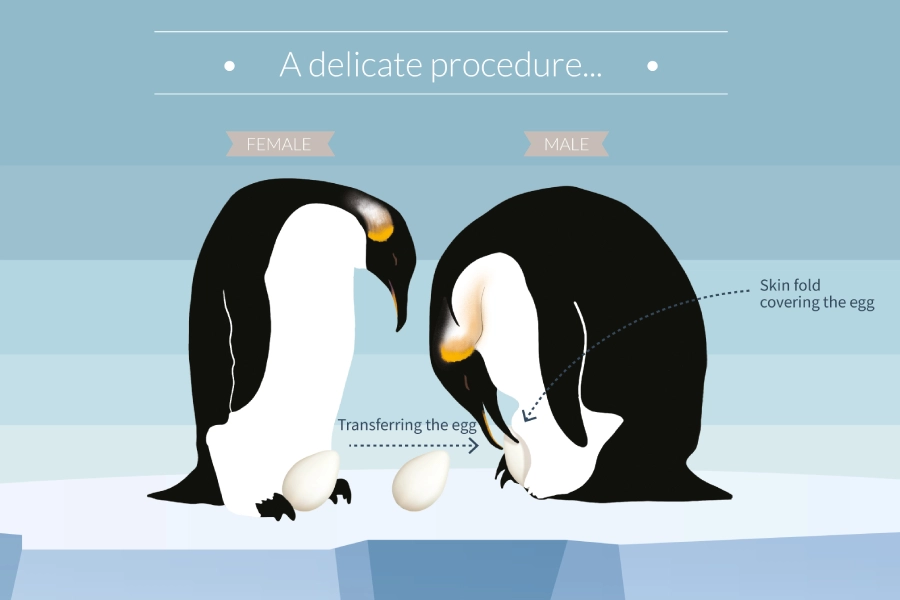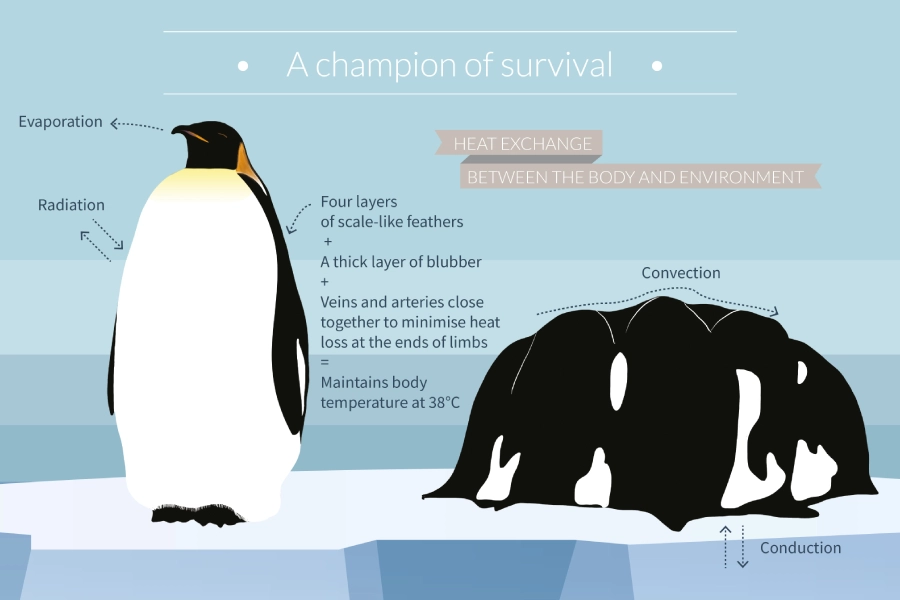For the first time, a cruise passenger was able to travel through the frozen sea ice to meet a colony of Emperor penguins. Julie Rogers walked 2.5 km inland on Snow Hill Island to view the largest breeding colony of Emperor penguins. It has always been a dream of Julie's to see the emperor penguins. This is the only way to see Emperor Penguin colonies without the assistance and disruption of helicopter tours. She said that being able to disembark directly onto the ice and walking on top of frozen sea ice is the ultimate polar exploration. Julie spent two days on Snow Hill Island and several Emperor Penguin colonies. The emperor penguin is a sea bird. The Emperor Penguin is the only animal species to breed in the middle of the austral winter in the southern hemisphere. Young penguins are able to break away from their parents at the beginning of the summer when food is plentiful. It runs from March to December and lasts a long time. The Emperor penguins arrive on the ice at the beginning of winter when the sea ice begins to create ice jams. Other animals leave the area in search of better weather. The Emperor penguins make their way back to the colony after a long walk on the sea ice in columns of hundreds of strong individuals. There are many colonies of Emperor penguins in the South Pole. Between May and June the female lays a single egg. Once they have laid their egg, the breeding females leave the colony to go back to the sea to feed, leaving the male alone to nurture the egg. The male hides the egg under the folds of his skin to make it harder to see. If the egg were to stay on the ice for a long time, it would freeze very quickly. Eggs hatch in July. After returning to the colony, the females regurgitating the contents of their stomachs feed their chick. The chick can be fed that way for a long time. The males who have fasted for over four months and lost up to 45% of their initial body weight are the ones who take the silent road to the open water. They can stock up on food and return to the colony to feed their young. When the ice breaks up in December, the young must travel several times between the colony and ice-free zones before becoming self-sufficient. The Emperor Penguin is one of the warm-blooded animals to face some of the harsher weather on the planet. How does it survive? It is well suited to survive on the ice. The penguin is equipped with a lot of tools to fight the cold. Four layers of feathers shaped like scales, a thick layer of blubber and a blood system provide exceptional thermal insulation. It adapted its behavior to survive. In order to limit the amount of body surface area exposed to the cold, emperor penguins have evolved. They are resting on their claws and under their feet are a layer of blubber. One of the few bird species that isn't territorial is them. The fact that they cover their egg on their feet allows them to be on the move. They need to engage in thermoregulatory behavior in order to survive. Turtle formations are formed when Emperor penguins stick together to form dense groups. Individual penguins in the centre are able to warm up. They move between the centre and the outside of the formation. This behavior is also adopted by the chick once they become thermally independent. They form formations of chick turtles to survive the cold. The Ross Sea Shelf and Adlie Land are explored in greater depth by Le Commandant Charcot than any other expedition vessel. Flight credits are available for clients to join Le Charcot and exploreAntarctica, choose from seven expeditions in November and December of 2020. New bookings can be made before January 31,23. Contact PONANT at reservations.aus@ponant.com Comments are closed. 